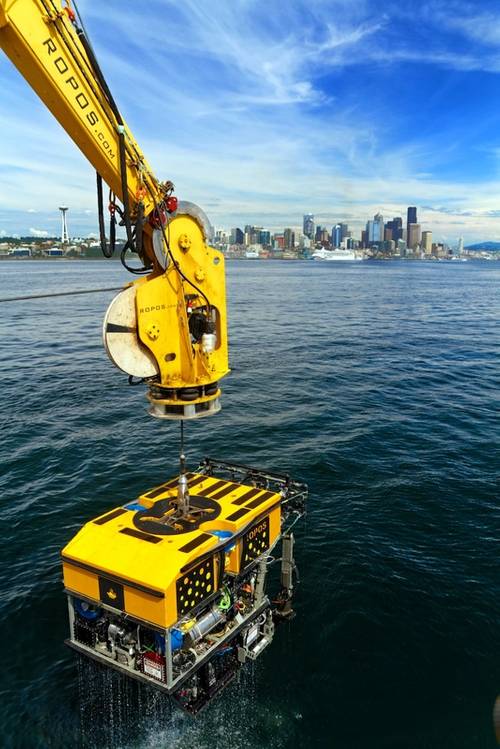ROV Installs RSN Cabled Observatory off US
The ROPOS remotely operated subsea vehicle (ROV) operated by the Canadian Scientific Submersible Facility (CSSF) has completed the installation of the U.S. Regional Scale Nodes (RSN) Cabled Observatory, located off the coast of Washington and Oregon. The RSN is funded by the U.S. National Science Foundation as part of the Ocean Observatories Initiative. The cabled observatory will provide interactive real-time data from the sea floor and throughout the water column with state-of-the-art moorings that reach nearly 2,900 meters above the seafloor. Data flowing from this system will dramatically increase students, researchers and policy-makers discovery and understanding of oceanic behavior.
This year’s 83-day deployment aboard the RV Thomas G. Thompson saw the installation and testing of secondary infrastructure including installation of over 30,000 lbs of equipment on the sea-floor and 15,701 meters of cable laid and tested by the ROPOS’ Remotely Operated Cable Laying System (ROCLS), and approximately 140 diverse instruments (more than 98% of which are now sending data to shore).
With extension cables, junction boxes, instruments and deep/shallow profiler moorings operational, the observatory the observatory will very soon be providing data for the scientific community.
“The efficiency of this year’s operations were unparalleled,” said Keith Shepherd, General Manager of the Canadian Scientific Submersible Facility, “We had a 97.8% up-time, which enabled us to complete over 650 hours of dives, and get all of the installations completed in a tight window. Seeing the first successful data transmission from the seafloor to the shore was a momentous event that UW’s Chief Scientist, Dr. John Delaney, had been waiting almost 20 years to see.”
The full installation of the Observatory is a testament to the successful collaboration between the University of Washington and the Canadian Scientific Submersible Facility, which has spanned almost four years on this project. Nine-hundred kilometers of electro-optical telecommunications cable installed in 2011 and seven primary nodes deployed in 2012 provide real-time two-way communication to the Internet via extension cables, which total more than 56 kilometers in length.















 December 2025
December 2025



